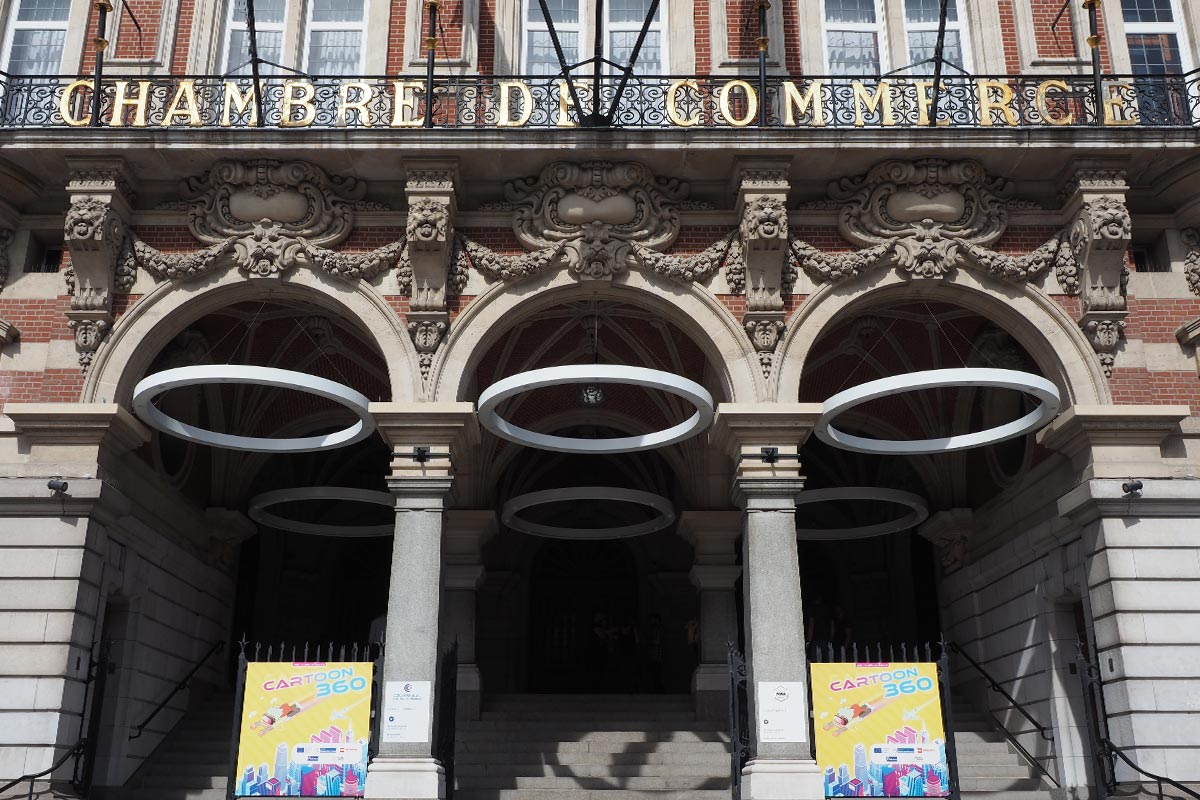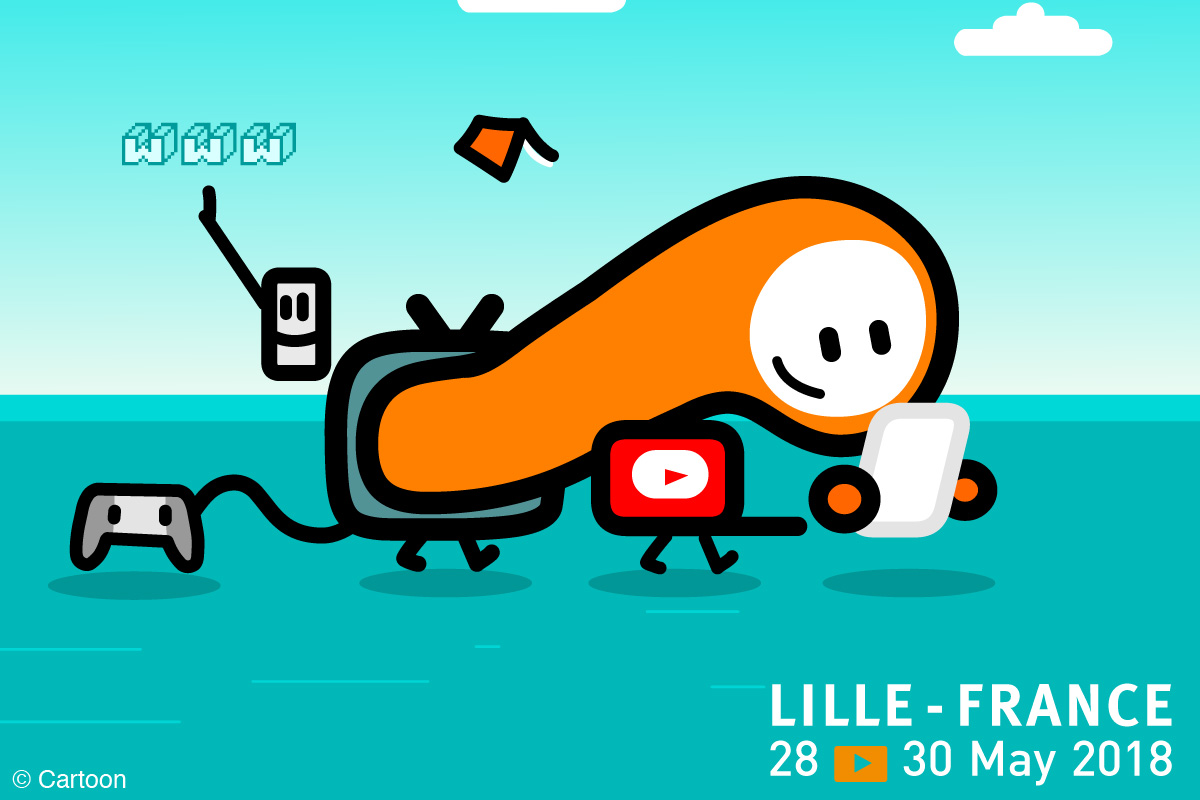Mobile Suit Gundam: THE ORIGIN is an animation series, which is a prequel to Mobile Suit Gundam, a very famous TV animation series in Japan. In the early 1980s, Mobile Suit Gundam became a huge social phenomenon in Japan and has set a gold standard in Japanese robot animations. THE ORIGIN is based on the same-titled comic series written by Yoshikazu Yasuhiko, who is the general director of the animation series as well.
[row][column size='1/2']
The Animationweek editorial team has delivered to you an interview article with Osamu Taniguchi, the producer of THE ORIGIN and Mika Akitaka, one of the main mechanical designers of THE ORIGIN, in 2016*. This time, we could get the opportunity to hear about the character design for THE ORIGIN from Tsukasa Kotobuki, who has the role of character design and lead animator, and Atsuhiko Sekiguchi, the setting coordinator of the animation series.
*Event report and interview titled, “Gundam The Origin” – The secret of appealing mechanical design, in Issue 04.
[/column]
[column size='1/2']
[caption id="attachment_7008" align="aligncenter" width="1200"]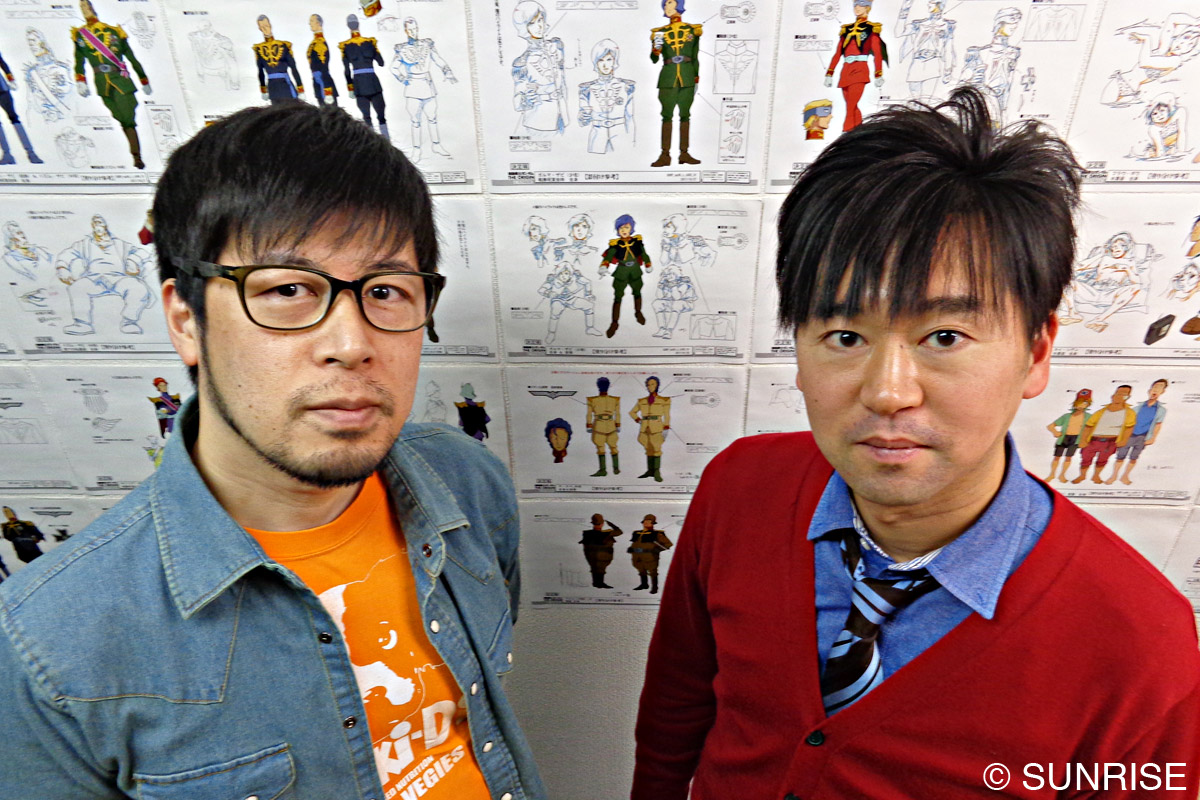 left: Tsukasa Kotobuki, right: Atsuhiko Sekiguchi[/caption]
left: Tsukasa Kotobuki, right: Atsuhiko Sekiguchi[/caption]
[/column]
[/row]
Joining the project
Hideki Nagaishi (HN): What was your reaction when you were asked to design characters for The ORIGIN?
Tsukasa Kotobuki: It was a project to make a new start on the Gundam franchise for promoting the story and universe of Mobile Suit Gundam by making a new animation title based on Mr. Yasuhiko’s original comic series with new visual designs when the project was just started.
At that time, I had been working for an animation project for about one to two years. It was a robot animation project, which aims to fit the demand of the American market, and one of the producers was a big name in Hollywood. I was responsible for the character design and mechanical concept of the project. It was a good opportunity for me to learn that it is by no means easy to attract and satisfy foreign markets with robot animation, which is popular in Japan. Just after the American project, from which I could learn the differences of market demands between Japan and America, was frozen for a number of reasons, as it happens, I received a suggestion from Mr. Yasuhiko to re-design the characters in his original comics for the animation project to catch the heart of current young Japanese audience and also can be accepted international market.
Actually, at first, Mr. Yasuhiko planned to delegate the entire work of making his comics into an animation series within Sunrise’s discretion**, but he wanted Sunrise to reflect his opinion only on character design. So, he called me to the project as the character designer.
However, for a number of reasons, Mr. Yasuhiko decided to take the role of the general director and draw all the storyboards himself about half a year after I joined the project. It made some changes in the direction of the project. In terms of its visual design, emphasis shifted on the reproduction of the visual of original comics in a very high level, so it came to Mr. Yasuhiko designing the main characters and I design other characters with the same visual design of Mr. Yasuhiko’s original comics for the animation series.
**Sunrise is one of the big animation studio which has been developing all animations of the Gundam franchise
The workflow of the character design from THE ORIGIN
HN: Could you please let us know the process of designing characters in the animation project, THE ORIGIN?
Atsuhiko Sekiguchi: I would like to tell you about the design process of the characters designed by Mr. Kotobuki.
- I check the storyboard of each episode and make a list of characters that might need to be newly designed for each episode.
- Mr. Yasuhiko, the general director, and the layout/animation director of each episode, have a discussion to decide which characters in the list I made should have a fresh character design for each episode.
- I allocate the characters to Mr. Yasuhiko and Mr. Kotobuki for design. If the character requesting the design is a soldier, the details of the character, such as the rank, are decided at this time.
- Mr. Kotobuki makes the rough design of the whole picture of the characters he is in charge of.
- The layout/animation director of each episode checks the rough designs.
- Yasuhiko, the general director, see the rough designs, which passes the layout/animation director’s assessment of Mr. Kotobuki’s character design for the first time.
- Mr. Kotobuki cleans up the rough designs (in line drawing).
- The layout/animation director check the cleaned up design illustrations.
- Yasuhiko, the general director, makes the final check of the designs.
- Hiroyuki Nishimura, the supervising animator, designates shadows to the final character design illustrations drawn by Mr. Kotobuki.
- At the very end of the character design process, the color stylist, Nagisa Abe, makes all the color settings for each character.
Then, we get the completed character design sheets to animate.
[row][column size='1/2']
[caption id="attachment_7012" align="aligncenter" width="1200"] A rough design of Lino Fernandez by Tsukasa Kotobuki.[/caption]
A rough design of Lino Fernandez by Tsukasa Kotobuki.[/caption]
[/column]
[column size='1/2']
[caption id="attachment_7013" align="aligncenter" width="1200"]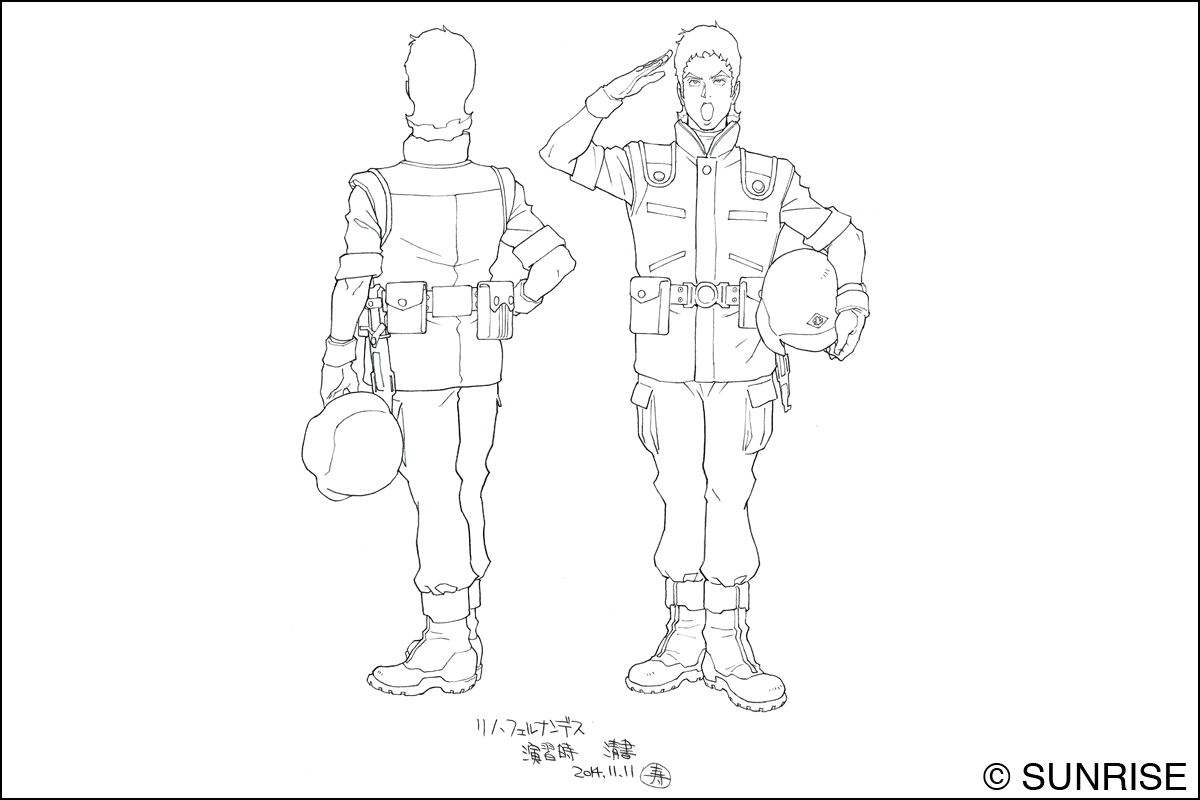 Design illustrations of Lino Fernandez, cleaned up by Tsukasa Kotobuki.[/caption]
Design illustrations of Lino Fernandez, cleaned up by Tsukasa Kotobuki.[/caption]
[/column]
[/row] [row]
[column size='1/2']
[caption id="attachment_7014" align="aligncenter" width="1200"]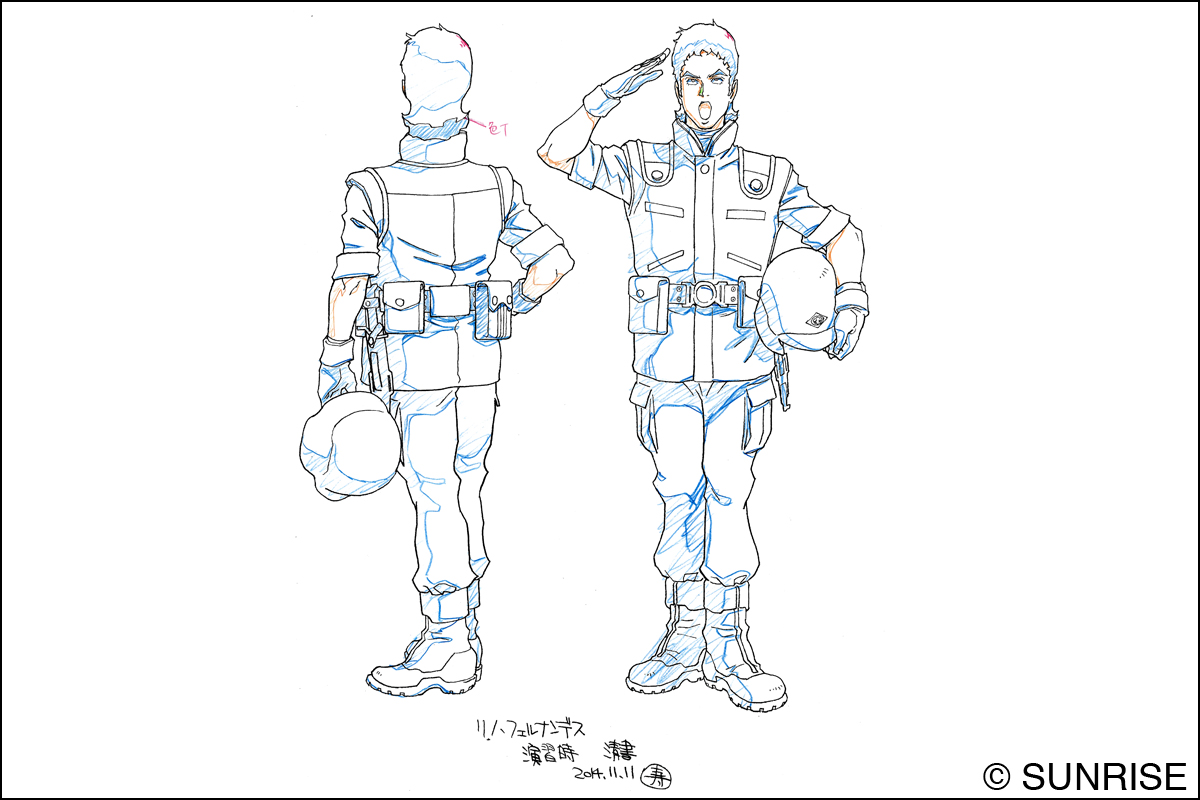 Hiroyuki Nishimura designates shadows to the final character design illustrations.[/caption]
Hiroyuki Nishimura designates shadows to the final character design illustrations.[/caption]
[/column]
[column size='1/2']
[caption id="attachment_7015" align="aligncenter" width="1200"]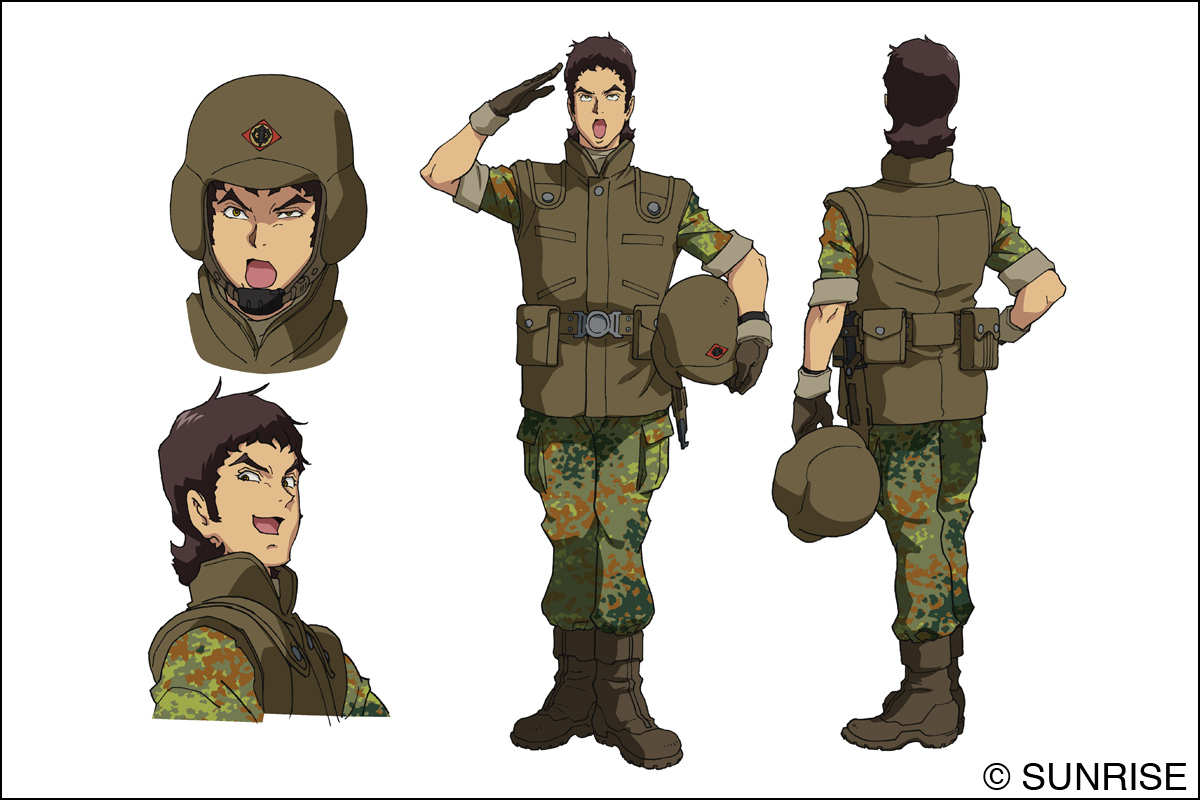 Nagisa Abe decides on all the color settings.[/caption]
Nagisa Abe decides on all the color settings.[/caption]
[/column]
[/row]
Tsukasa Kotobuki: In the case of a character appearing in the original comics, I receive a request to design the character like, “Please make the design of this person who appears in this frame on this page of the original comic book”, and I draw the character design illustrations of the person by imagine his/her full-length figure and facial expression from that one cut.
In my case, I serve as a lead animator concurrently, so that I check the characters I designed when I check keyframes and in-betweens, such as whether the features of each characters I designed intentionally and the points of the designs I want to be illustrated were drawn properly. If these are not good enough, I would make corrections, such as adding lacking parts of the design.
[Continued on page 2]




